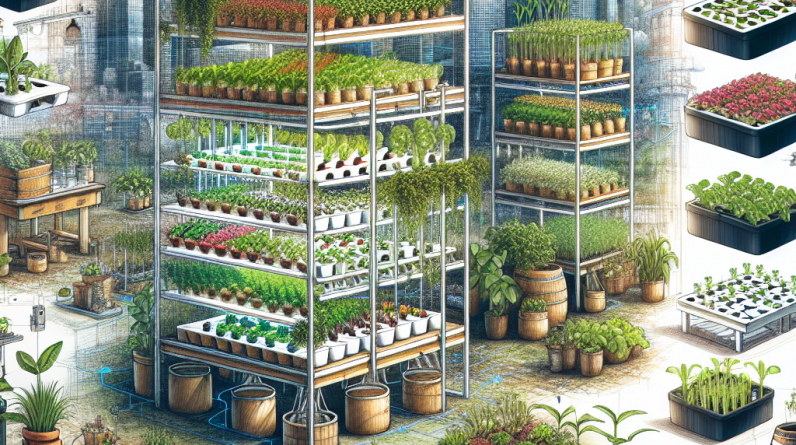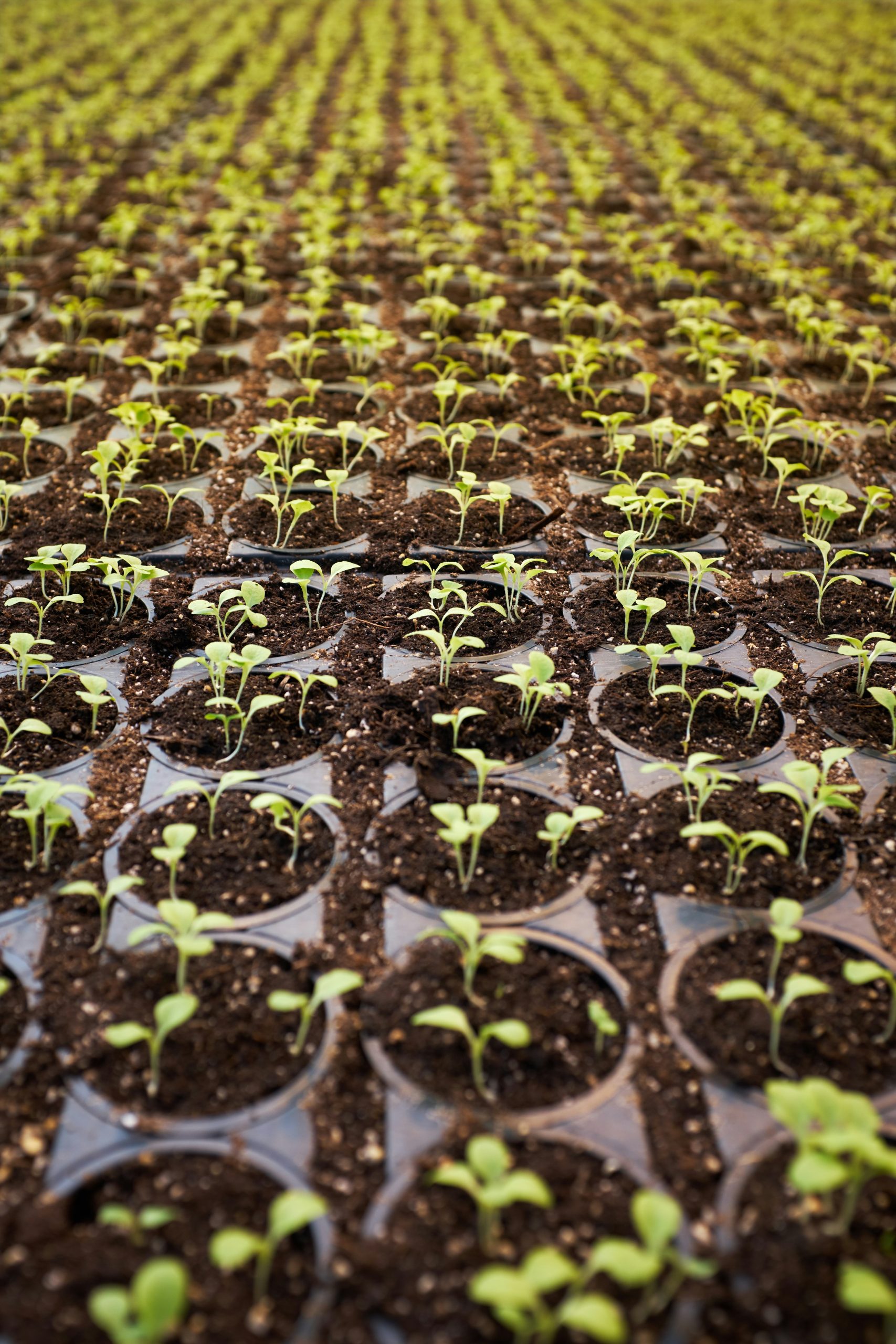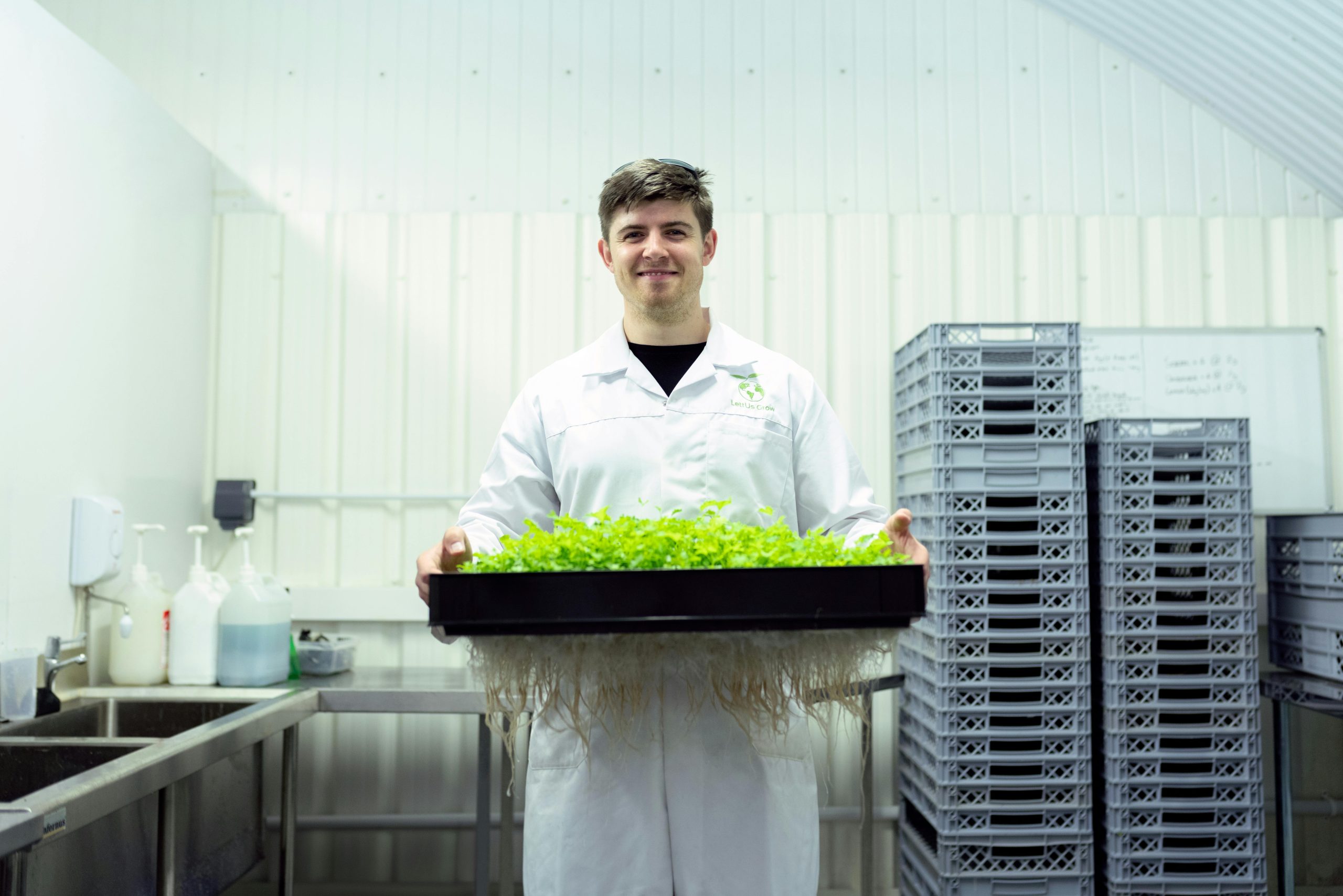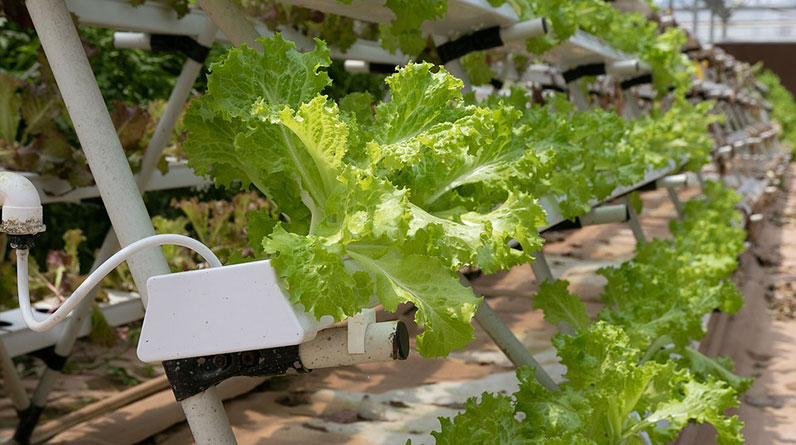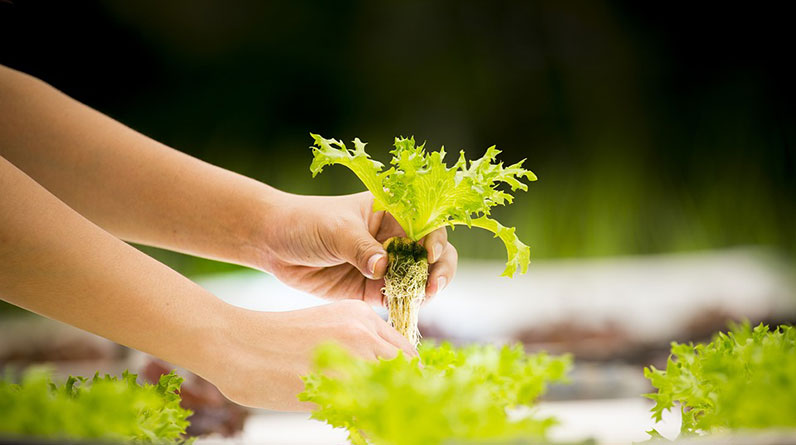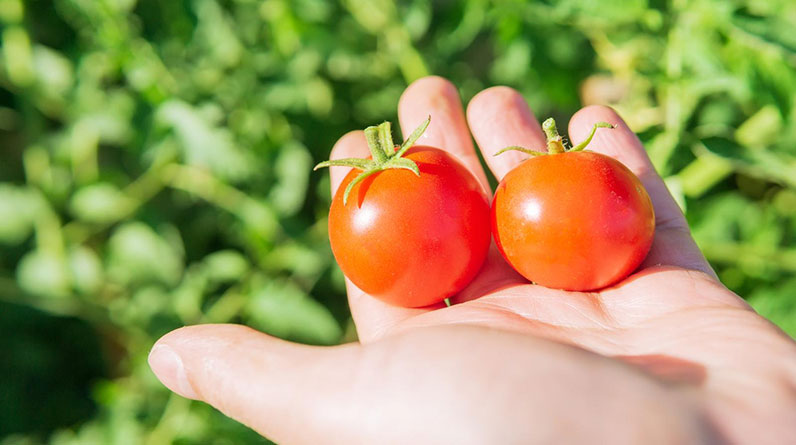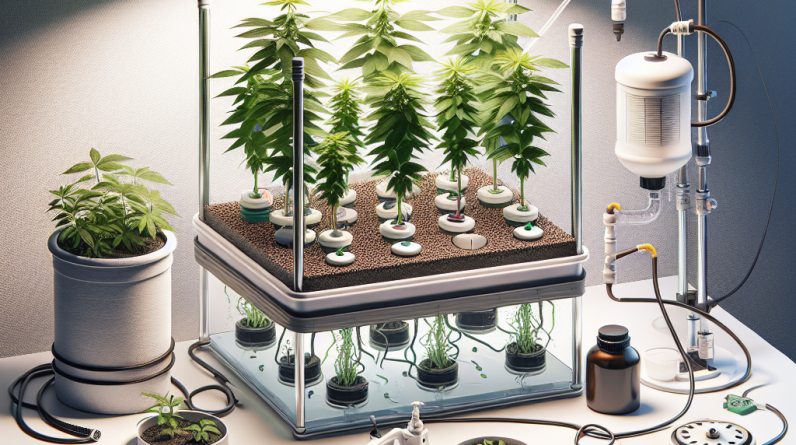
1. Choose the Right Hydroponic System
Understanding Hydroponic Systems
When I started my hydroponic journey, I realized how crucial it was to select the right system. There are various types, like Deep Water Culture (DWC) and Nutrient Film Technique (NFT). Each type suits different plants, so make sure to consider what you want to grow. I found DWC to be particularly forgiving and low-maintenance, which is why I gravitated towards it.
Moreover, each system has its pros and cons. DWC, for instance, keeps the roots submerged in nutrient-rich water, which ensures great growth rates. On the flip side, systems like NFT require more monitoring as they rely on a thin film of nutrient solution. Things can go south quickly if you aren’t paying attention.
Think about the space you have too. Not every system fits into every environment. I’ve had success with compact setups that work beautifully indoors, which lets me skip worrying about pests and unpredictable weather outside.
Consider Your Available Space
Space is a major factor. My first hydroponic project was somewhat of a gamble because I didn’t gauge my space correctly. It’s best to map out how much room you can dedicate to your hydroponic setup. Whether you’re working in a large garden or just a spare room, make that space work for you.
Vertical growing systems are a fun option if you’re short on space. I didn’t think I could pull off vertical gardening at first, but it actually maximizes your yield without spreading out too much. A little creativity can lead to some fantastic arrangements!
Also, ensure there’s good air circulation in your space. I learned the hard way that stagnant air can stifle plant growth. Incorporating fans, especially in smaller setups, made a world of difference for me.
Evaluate Your Budget
Hydroponic systems can range from budget-friendly to very pricey. Trust me, I had some sticker shock when I began looking into equipment. I spent a lot of time looking for great deals on used equipment without compromising quality, which made my initial setup totally doable.
Don’t forget about ongoing costs! You’ll need nutrients, pH testers, and possibly electricity for lighting. I keep a small emergency fund set aside just for unexpected costs, which has saved me more than once!
Finding DIY options can also help cut costs. There are tons of resources online with guides for building your own systems. I built my first DWC from a plastic tote and air pump, and I still remember the pride I felt watching it flourish!
2. Select Low-Maintenance Plants
Research Plant Options
Choosing the right plants is just as important as the system itself. I started with herbs like basil and mint since they are pretty forgiving in a hydro setup. Researching the types of plants that thrive in hydroponics is essential; it can make a huge difference in your experience.
Some plants grow super quickly and require less fussing. Leafy greens like lettuce or spinach are not just delicious; they grow relatively fast and don’t require a whole lot of pampering. I was able to harvest my first batch of lettuce in just a few weeks!
Don’t overlook seasonal plants either. Some herbs and vegetables do best at certain times of the year. I like to rotate my crops based on the season to keep my garden dynamic and interesting.
Start with Simplicity
When I dove into hydroponics, I didn’t take on too much at once. Starting simple was my mantra. Begin with just a couple of different plants. It allows you to learn what’s working and what isn’t without overwhelming yourself.
I recall my first attempt with just two pots – one with basil, the other with lettuce. As I learned a bit more about how often to check the pH levels and tweak the nutrient solution, I felt more confident expanding my setup.
Plus, simpler setups are easier to manage. As I began adding more plants, I appreciated having a solid foundation to work from. So, don’t rush—take your time, and enjoy the process!
Watch for Pests and Problems
Pests can show up when you least expect it. I can’t tell you how relieved I felt the first time I spotted a tiny bug on my basil, but I quickly learned that regular checks save you a lot of headaches later on. A simple inspection of your plants can help you catch issues before they escalate.
Creating a low-maintenance hydroponic system also means keeping an eye out for environmental factors. Things like water levels, nutrient concentrations, and light exposure can affect your plants. I’ve got a routine where I check these factors weekly, which became second nature before long.
Don’t be afraid to reach out to local gardening groups or forums when you face problems. There’s a supportive community out there, and I’ve benefited greatly from sharing tips and experiences with others. The more feedback you get, the better prepared you are!
3. Set Up a Routine
Establish Maintenance Intervals
One thing I’ve found tremendously helpful is creating a routine. Regular maintenance intervals can keep your system running smoothly without becoming a chore. Marking down specific days to check nutrient levels, water, or plants can make things predictable.
When I first started, I’d forget and things would spiral out of control. Now, I use a simple calendar reminder to keep me on track. Some people even set up a whiteboard in their growing area for quick, visual reminders!
Routine doesn’t mean drudgery. I actually enjoy these moments in the garden—they’ve turned into a peaceful break from my day-to-day. It’s become a habit that I look forward to, instead of a pesky task I have to do.
Document Your Progress and Issues
Taking notes has been a game-changer for me! Tracking changes, problems, and successes can help you pinpoint what works best for your setup. I keep a small notebook where I jot down observations. You don’t need to overcomplicate things; even small notes can lead to significant insights.
Writing things down allows you to see patterns, too. If I notice that my plants thrive better when I adjust the nutrient mix one way or another, I have that documented for future reference. It’s like having a personalized gardening guide!
Plus, sharing my notes with friends has been awesome—it can spark conversations about best practices and even lead to fresh ideas on how to enhance each other’s setups. It’s all about learning and growing together!
Enjoy the Harvest
Finally, don’t forget to celebrate your wins! Hydroponically grown plants are absolutely rewarding, and nothing beats the first time you taste a salad from your own system. Make this a joyous experience instead of just another task!
I always find ways to incorporate my homegrown goodies into meals—I’ve done everything from fresh salads to homemade pesto. Sharing these dishes with family and friends makes it even more enjoyable!
Plus, the fresh flavor is unbeatable. This hobby not only yields delicious food but also connects me with nature, even when I’m inside. It’s such a fulfilling experience that rejuvenates my spirit.
4. Optimize Environmental Conditions
Control Temperature and Humidity
Environment is key in hydroponics. I quickly learned that optimal temperature and humidity levels can dramatically affect plant health. For most plants, sticking around 70-75°F is ideal, but I’ve had to tweak mine a little based on the specific plants I was growing.
Using a hygrometer can make a big difference when checking humidity levels. I didn’t realize how much humidity affected my plants at first, but having a small fan going helped regulate everything just right.
Remember, too much heat can stress plants while too much cold can stunt growth. I’ve found it helpful to keep an eye on local weather when changing seasons. Simple adjustments in terms of light exposure and airflow can make a world of difference!
Investing in Lighting
Investing in the appropriate lighting system cannot be understated. If you’re growing indoors, you definitely want to look into grow lights. I learned early on that natural sunlight isn’t always reliable, especially in winter months.
LED grow lights are now my go-to as they provide the right wavelength while being energy-efficient. They also produce minimal heat, so I don’t have to worry about burning my plants. Every little detail counts, and the right lighting has helped my plants thrive like nothing else could!
Many companies offer lights designed specifically for hydroponic systems, so it’s worth looking around. A good setup can legitimately change your plant game—and it’s such a fun way to geek out over growing!
Monitor Light Exposure
Besides investing in quality lighting, monitoring light exposure is equally important. I like to rotate my plants occasionally so each one receives equal light, especially if you’ve got spots in your grow area that catch a bit more than others. It makes a difference!
Also, I’ve created a consistent light schedule—around 12-16 hours depending on the crops I’m growing. Some plants like more light, while others prefer the dark, so research is your friend here!
When it comes to hydroponics, light isn’t just for show—it’s vital for photosynthesis. Keeping this in check has dramatically improved the health of my plants, and I can’t stress this enough!
5. Automate Where Possible
Utilize Timers and Sensors
Automation is the magic word when it comes to making your hydroponic system low-maintenance. Using timers to control lights and pumps can save you a ton of headaches. I use timers for both lighting and nutrient delivery, which lets me set it and forget it for the most part.
Investing in sensors that monitor pH and nutrient levels can be a game-changer, too. Some are affordable and really take the guesswork out of keeping your plants happy. I used to worry all the time about water quality, and now I have peace of mind knowing that my sensors are doing the legwork for me!
Honestly, automated systems not only improve efficiency—they also give you more time to enjoy your garden instead of constantly stressing about the day-to-day upkeep. Who doesn’t want more time with their plants, right?
Consider a Hydroponic Controller
If you’re serious about hydroponics, you might want to think about investing in a hydroponic controller. These nifty devices can monitor everything from pH levels to nutrient delivery. I hesitated at first due to the price but ended up saving so much time, it totally paid off.
The convenience of having a central unit managing everything allowed me to focus more on growing and experimenting with different crops instead of stressing over the technical side. I can actually relax knowing things are running smoothly!
Plus, many controllers provide alerts when something isn’t quite right. This way, I can tackle stressors before they affect my plants. Automation is seriously a lifesaver!
Explore Automatic Nutrient Delivery Systems
Automatic nutrient delivery systems have changed the game for me as far as maintenance goes. These systems can accurately deliver the right amount of nutrients at the right time, freeing me from a lot of manual work. This is particularly helpful for more frequently feeding plants.
When I installed mine, I was so thrilled to watch the plants flourish without the hassle! I could finally take short trips without worrying about my garden being neglected.
As time goes on, products and options get better and better, so definitely research what works best for your setup. The more you can automate, the better your hydro experience will be!
Frequently Asked Questions
1. Is hydroponics really low-maintenance?
Yes, once you establish your system and routine, hydroponics can be much easier to maintain than traditional gardening. Regular check-ups and automation help keep things running smoothly.
2. What types of plants are best for beginners?
Starting with herbs like basil or mint, and leafy greens such as lettuce or spinach is a great way to begin. They grow quickly and are relatively easy to care for!
3. How do I prevent pests in my hydroponic system?
Regularly check your plants for pests, maintain good air circulation, and consider using natural repellants. Keeping your area clean helps, too!
4. What should I do if my plants are not growing well?
Evaluate factors like light, nutrients, pH levels, and water temperature. Sometimes, simple adjustments can significantly boost your plants’ health.
5. Can I grow hydroponic plants indoors?
Absolutely! In fact, many people successfully grow hydroponic systems indoors due to the ability to control the environment. Just ensure you have the right lighting and ventilation!
Related Content
- A Cutting-Edge Solution to Sustainable Agriculture
- iDOO Indoor Garden Hydroponics Growing System 12Pods WiFi Smart Garden Plant Germination Kit with LED Grow Light Review
- The Ultimate Guide to the Best Countertop Hydroponic Garden for 2025
- The Benefits of Hydroponic Water Filtration
- Growing Without Soil is the Future of Farming


